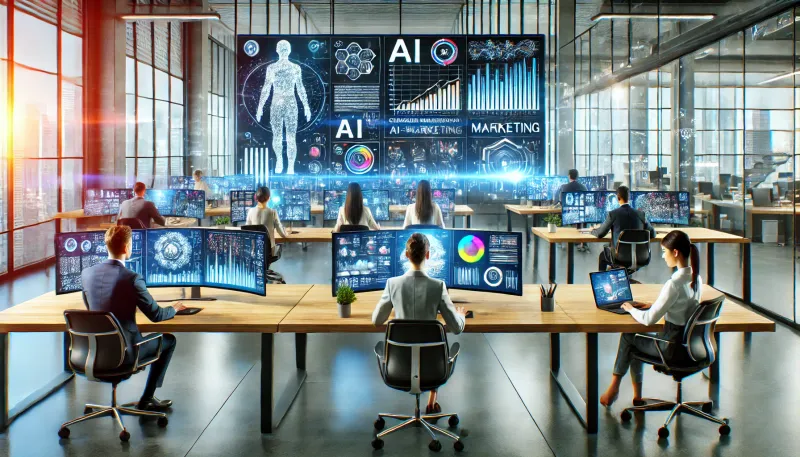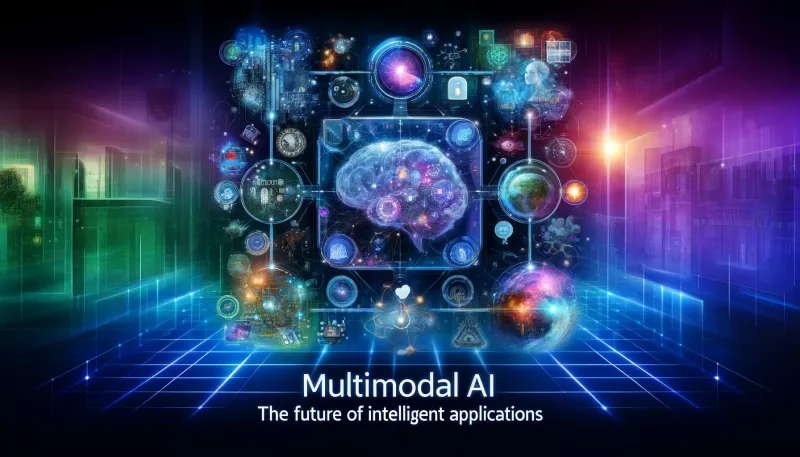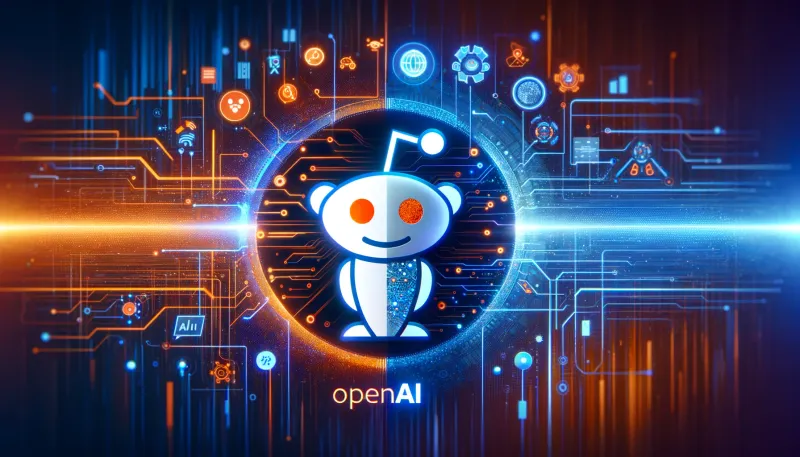Multimodal AI: The Future of Intelligent Applications
Multimodal AI: The Future of Intelligent Applications

OpenAI has released its latest and most advanced language model yet – GPT-4o, also known as the “Omni” model. This revolutionary AI system represents a giant leap forward, with capabilities that blur the line between human and artificial intelligence.
Multimodal AI represents the next frontier in artificial intelligence, where models can understand and generate data across multiple modalities, such as text, images, audio, and more. As AI continues to evolve, it becomes increasingly clear that leveraging multiple modes of information can significantly enhance the capabilities and applications of AI systems. In this article, we will explore the concepts of multimodal AI with a focus on prominent models like GPT-4o, Google's Astra, and Veo. We will delve into their capabilities, applications, and how they will revolutionize the future of AI applications, particularly in areas like Python programming, emotional intelligence, and parallel processing.
Understanding Multimodal AI
Multimodal AI refers to the integration and processing of multiple types of data inputs, such as text, images, and audio, within a single AI model. This approach allows the AI to understand and generate responses that are more contextually rich and relevant. For example, a multimodal AI could analyze a text description, understand an associated image, and generate a cohesive response that incorporates both types of data.
GPT-4o: Pioneering Multimodal AI
GPT-4o, developed by OpenAI, is a landmark in the field of multimodal AI. It extends the capabilities of its predecessors by integrating textual, visual, and audio data, enabling it to understand and generate content across these modalities.
Key Features of GPT-4o
- Text, Image, and Audio Processing: GPT-4o can process text, images, and audio, allowing it to understand and generate detailed responses that incorporate multiple types of information. This capability is particularly useful in applications like image captioning, visual question answering, and generating descriptive content from visual and audio inputs.
- Enhanced Contextual Understanding: By integrating multiple modalities, GPT-4o can provide more accurate and contextually relevant responses. For instance, it can analyze an image and an accompanying audio description to generate a more comprehensive and nuanced response.
- Advanced Conversational Abilities: GPT-4o’s ability to handle multiple types of data inputs makes it a powerful tool for conversational AI. It can understand and respond to queries that involve textual, visual, and audio components, leading to more natural and engaging interactions.
- Real-Time Translation and Audio Interaction: GPT-4o can translate and interpret audio inputs in real-time, allowing for seamless communication across different languages. It can also generate audio responses, enabling applications that require spoken interaction.
Applications of GPT-4o
- Content Creation: GPT-4o can be used to generate rich multimedia content, combining text, images, and audio to create engaging articles, marketing materials, and social media posts.
- Education: In educational applications, GPT-4o can provide detailed explanations that include textual descriptions, visual aids, and audio explanations, enhancing the learning experience.
- Customer Support: GPT-4o can analyze customer queries that include screenshots, images, or voice messages, and provide accurate responses, improving the efficiency and effectiveness of support services.
- Real-Time Translation: GPT-4o can facilitate real-time translation services, allowing for smooth communication across different languages in settings such as international business meetings, travel, and customer service.
Google Astra: The Next Generation of Multimodal AI
Google's Astra represents another significant advancement in the field of multimodal AI. Building on the success of models like BERT and T5, Astra integrates advanced text, image, and audio processing capabilities.
Key Features of Google Astra
- Seamless Integration of Multiple Modalities: Astra can seamlessly integrate text, images, and audio inputs, providing a holistic understanding of the data. This capability enables it to generate responses that consider all relevant information, regardless of the format.
- High Precision and Accuracy: Astra’s advanced algorithms ensure high precision and accuracy in understanding and generating responses. This feature is particularly important in applications that require detailed and accurate information, such as medical diagnosis or legal advice.
- Scalability and Flexibility: Astra is designed to be highly scalable and flexible, making it suitable for a wide range of applications across different industries. It can be customized and fine-tuned to meet specific needs, ensuring optimal performance in various contexts.
- Real-Time Audio Interaction: Astra can process and generate audio inputs and outputs in real-time, enabling applications that require voice interaction, such as virtual assistants, customer support, and interactive voice response systems.
Applications of Google Astra
- Healthcare: In the healthcare sector, Astra can analyze patient records, medical images, and audio recordings of consultations to provide comprehensive diagnostic support.
- Legal Services: Astra can assist legal professionals by analyzing legal documents, court transcripts, and audio recordings of testimonies to provide detailed insights and recommendations.
- Entertainment: In the entertainment industry, Astra can be used to create immersive experiences that combine text, images, and audio, enhancing the engagement and enjoyment of users.
- Interactive Voice Response: Astra’s real-time audio processing capabilities make it ideal for creating advanced interactive voice response systems that can handle complex queries and provide detailed information.
Veo: Redefining Multimodal Interaction
Veo is another notable player in the multimodal AI landscape. With a strong focus on interactive applications, Veo leverages multimodal capabilities to create highly engaging and interactive experiences.
Key Features of Veo
- Interactive Multimodal Capabilities: Veo excels in creating interactive experiences that combine text, images, and audio. This capability makes it ideal for applications that require user interaction and engagement, such as virtual assistants and interactive storytelling.
- Emotion Recognition and Response: Veo’s advanced algorithms can recognize and respond to emotional cues in text, images, and audio. This feature enables it to provide empathetic and emotionally intelligent responses, enhancing user satisfaction and engagement.
- Real-Time Processing: Veo is designed for real-time processing, ensuring quick and accurate responses to user inputs. This capability is essential for applications that require immediate feedback, such as gaming and virtual reality.
- Real-Time Audio Translation and Interaction: Veo can translate audio inputs and generate audio outputs in real-time, facilitating seamless multilingual communication and interactive experiences that involve spoken dialogue.
Applications of Veo
- Virtual Assistants: Veo can be used to create highly interactive and emotionally intelligent virtual assistants that provide personalized and empathetic support to users.
- Interactive Storytelling: In interactive storytelling applications, Veo can combine text, images, and audio to create immersive and engaging narratives that respond to user inputs.
- Gaming: Veo’s real-time processing capabilities make it ideal for gaming applications, where it can create dynamic and interactive experiences that respond to player actions and emotions.
- Multilingual Communication: Veo’s real-time audio translation capabilities enable smooth communication across different languages, making it useful in international settings and multilingual environments.
The Future of AI Applications with Multimodal AI
The integration of multimodal capabilities in AI models like GPT-4o, Google Astra, and Veo is poised to revolutionize the future of AI applications. Here are some key areas where multimodal AI will have a significant impact:
Python Programming and Development
Multimodal AI models can significantly enhance Python programming and development by providing more intuitive and interactive coding environments. For instance, developers can use GPT-4o to generate code snippets from textual descriptions and visual diagrams. This capability can streamline the development process and reduce the time and effort required to write and debug code.
Emotional Intelligence in AI
Emotional intelligence is a critical component of effective human-AI interaction. Multimodal AI models like Veo can recognize and respond to emotional cues in text, images, and audio, enabling them to provide more empathetic and emotionally intelligent responses. This capability can enhance user satisfaction and engagement in applications like virtual assistants, customer support, and mental health support.
Parallel Processing
Parallel processing is essential for handling large and complex datasets in real-time. Multimodal AI models can leverage parallel processing techniques to analyze and generate responses from multiple types of data inputs simultaneously. This capability can significantly improve the efficiency and performance of AI applications in various fields, including healthcare, finance, and entertainment.
Real-Time Audio Translation and Interaction
The ability to translate and use audio as input and output in real-time is a game-changer for AI applications. Multimodal AI models like GPT-4o, Google Astra, and Veo can facilitate seamless communication across different languages and provide real-time audio interaction. This capability is crucial for applications such as international business meetings, customer support, and virtual assistants, enabling more natural and effective communication.
Integration of Multiple Modalities
One primary challenge is integrating various modalities—text, images, audio, and video—into a cohesive system. AI must interpret and synchronize diverse inputs to provide contextually accurate responses, which requires sophisticated algorithms and substantial computational power.
Contextual Understanding and Coherence
Maintaining contextual understanding across different modalities is another significant hurdle. The AI must retain and correlate contextual information, such as tone and background noises, to ensure coherent and contextually aware responses. Developing neural network architectures capable of handling these complex interactions is crucial.
Ethical and Societal Implications
The deployment of these AI systems raises ethical and societal questions. Addressing issues related to bias, transparency, and accountability is essential for building trust and ensuring the technology aligns with societal values.
Privacy and Security Concerns
Building these systems involves handling sensitive data, raising privacy and security concerns. Protecting user data and complying with privacy regulations is essential. Multimodal systems expand the potential attack surface, requiring robust security measures and careful data handling practices.
Conclusion
Multimodal AI represents a significant advancement in the field of artificial intelligence, enabling models to understand and generate responses from multiple types of data inputs. Prominent models like GPT-4o, Google Astra, and Veo are at the forefront of this revolution, offering advanced capabilities that can enhance a wide range of applications. As multimodal AI continues to evolve, it will undoubtedly transform the future of AI applications, driving innovation and improving the efficiency and effectiveness of AI systems across various industries.



